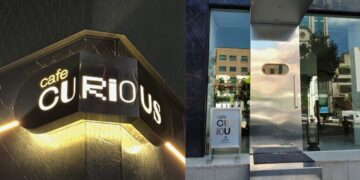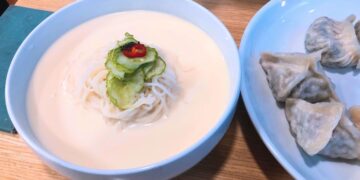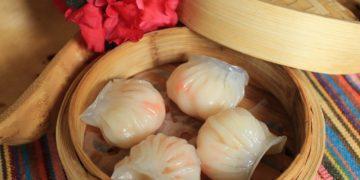Summer is getting hotter and hotter, so those bowls of bingsu and naengmyeon might be just the very refreshment you need. But not so fast, while these Korean foods are famous for soothing the summer heat, there’s an interesting approach in South Korea that healthy Korean meals to eat during summer are the ones that makes you sweat instead. But how is that possible? Sweating makes the heat feel even worse, right? So, what makes these hot Korean foods healthy choices for your summer meals? Dive deeper into the unique Korean cultural and psychological traditions with us in this editorial.
Korean Eats Sizzling Foods in Hottest Summer Months—and It’s Healthy…?
Yes, this might sound a bit strange if you’re new to this information. But yes, some Korean locals like to eat sizzling healthy hot meals during the peak of Summer. And this is not without reasonable explanation.
First of all, you must understand that the secret to surviving a Korean summer isn’t in the icebox. It’s in the broth, instead.
In the thick of monsoon season or under the dry, blazing sky of Seoul’s peak July, you’ll find locals hunched over steaming bowls of samgyetang or galbitang, beads of sweat rolling down their temples.
That is because in Korea, the philosophy of 이열치열 (iyeolchiyeol)—“fight heat with heat”—is more than tradition. It’s a cultural code passed down through centuries of living in a land where humidity clings to your skin and relief doesn’t come from cold drinks, but deep, balanced internal warmth.
Healthy Korean Summer Foods: The Science Behind the Sweat
It might sound backwards—eating hot soup on a blazing summer day—but in Korea, it makes perfect sense.
When you eat something warm and nourishing, your body starts to sweat. That might seem uncomfortable at first, but sweating is actually your body’s way of cooling itself down naturally. It’s how you regulate your inner temperature and keep things steady when the world outside feels like it’s melting.
But here’s where the Korean approach goes deeper: in traditional medicine, sweating from warm, medicinal foods isn’t just a response to heat—it’s a way to rebalance the body after it’s been worn down by extreme temperatures, emotional stress, or plain summer fatigue. Think of it like hitting the reset button. You’re not just cooling your skin—you’re recharging from within.
That’s why locals don’t flock to ice cream stands during the height of Korean summer. Instead, they line up for samgyetang (ginseng chicken soup), chueotang (loach soup), and galbitang (beef short rib soup)—each one packed with ingredients that restore strength, boost minerals, and keep the body resilient.
These aren’t just meals; they’re healing rituals in a bowl, especially during sambok season—the “dog days” of summer when the heat is at its fiercest.
The Core Trio: Healthy Korean Summer Foods That Locals Swear By
1. Samgyetang (삼계탕): The Summer Energy Recharge
This is Korea’s ultimate stamina food: a whole young chicken stuffed with ginseng, garlic, jujube, and glutinous rice, boiled until the broth turns creamy and the meat slides off the bone.
But beyond the ingredients, it’s about when and where you eat it. During Chobok, Jungbok, and Malbok—the three hottest days on the lunar calendar—queues form outside Tosokchon, a historic hanok restaurant near Gyeongbokgung Palace, known for its rich, earthy samgyetang and a shot of ginseng liquor served on the side.
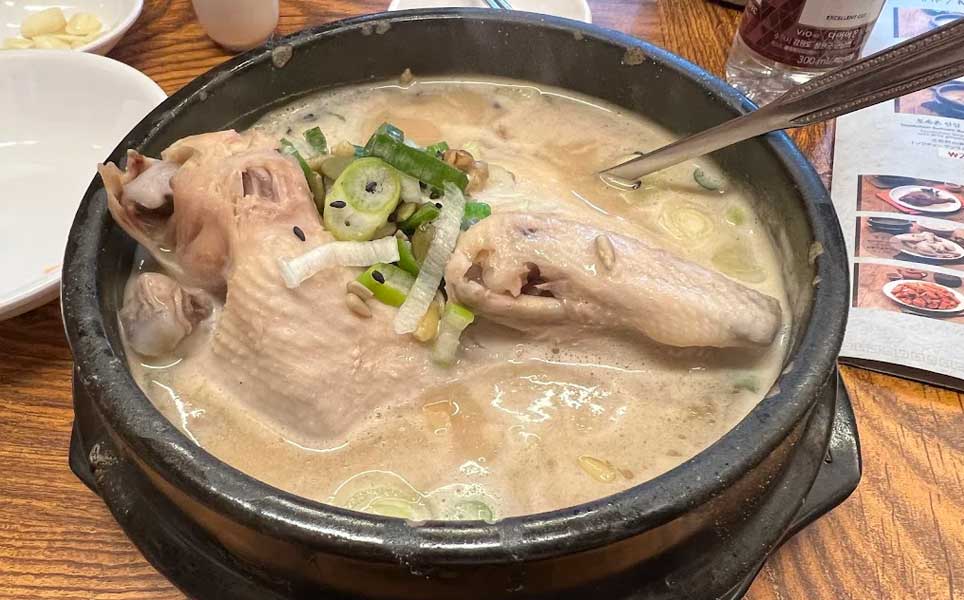
Expect to sweat. And expect to walk out feeling like your entire body has been given a second wind.
Tosokchon Samgyetang, Seoul
- Address: 5 Jahamun-ro 5-gil, Jongno District, Seoul, South Korea.
- Phone: +82 2 737 7444
- Opening Hours: 10 AM to 10 PM
- Website: Official Site
- Price Range: 20,000 – 30,000 KRW (15 – 22 USD)
2. Chueotang (추어탕): Korea’s Under-the-Radar Healing Elixir
If samgyetang is the celebrity, chueotang is the underrated indie gem. Made from loach—a small freshwater fish—it’s ground into a smooth, earthy broth enriched with perilla seeds, tofu, and seasonal greens. Don’t let the mudfish origins fool you: chueotang is packed with omega-3s, protein, and calcium, making it one of the healthiest Korean foods for summer.
You’ll find this dish in Yonggeumok, a near-century-old establishment in Seoul’s Jongno district that still makes it the traditional way. The broth is soothing but bold, with a slight peppery finish that warms the throat like a mild tonic.
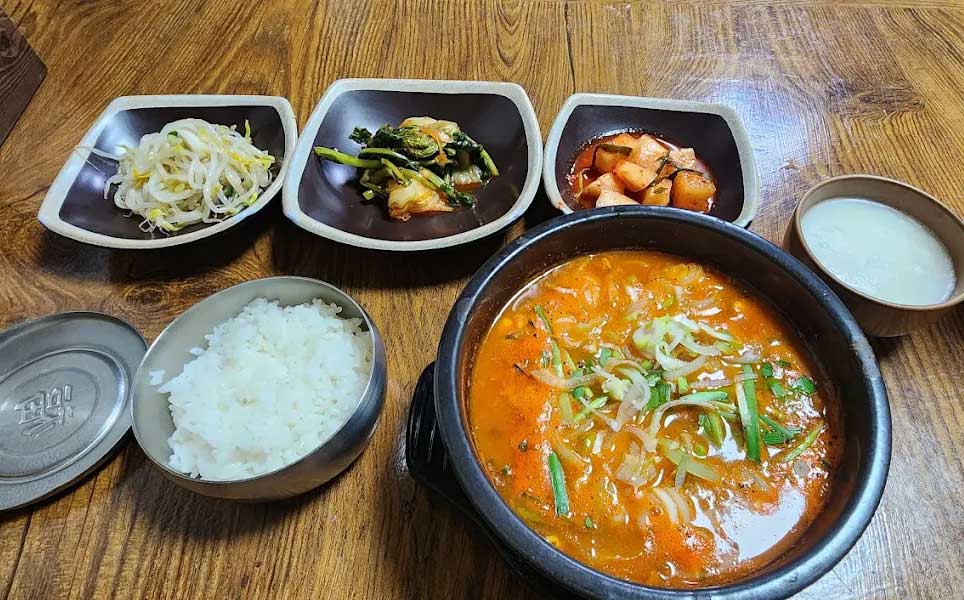
Yonggeumok, Seoul
- Address: 41-2 Jahamun-ro, Jongno District, Seoul, South Korea
- Phone: +82 2 777 4749
- Opening Hours:
- 11.30 AM to 3 PM and 5 to 9 PM (Mon – Fri)
- 11.30 AM to 8 PM (Saturday)
- Closed on Sunday
- Price Range: 10,000 – 20,000 KRW (7.5 – 15 USD)
💡 Tip: Ask for the Namdo-style version if you prefer a smoother, ground texture.
3. Galbitang (갈비탕): Clear Broth, Deep Comfort
While samgyetang and chueotang lean into herbal or earthy tones, galbitang delivers comfort in clarity. Simmered beef short ribs and radish melt into a clean, slightly sweet broth that nourishes without overwhelming. It’s light, hydrating, and rich in iron and collagen—ideal for those needing recovery from travel fatigue or heat exhaustion.
Onsimok, located in Seoul’s Gangnam district, elevates this dish with a unique twist: green chili pepper seasoning and sprigs of minari (Korean water parsley) that cut through the richness with a refreshing zing.
Onsimok, Seoul
- Address: 31 Teheran-ro 25-gil, Gangnam-gu, Seoul – 1st floor
- Opening Hours:
- 11 AM to 9.30 PM (Mon to Sat)
- Break Time at 3 to 4.30 PM, and
- Last Order at 8.30 PM
- Instagram: @onsimok
- Price Range: approximately 17,000 KRW (12.5 USD)
When to Try These Healthy Korean Summer Meals: The Sambok Season
The tradition of eating these stamina-boosting meals aligns with Sambok (삼복)—three milestone days in the lunar summer calendar:
- Chobok (초복): Early summer peak
- Jungbok (중복): Mid-summer heat
- Malbok (말복): Final hot spell before autumn
Locals mark these days with long queues at specialty soup restaurants, where eating hot is an act of healing, not punishment. These are beyond just ordinary Korean summer meals, they’re seasonal rituals.
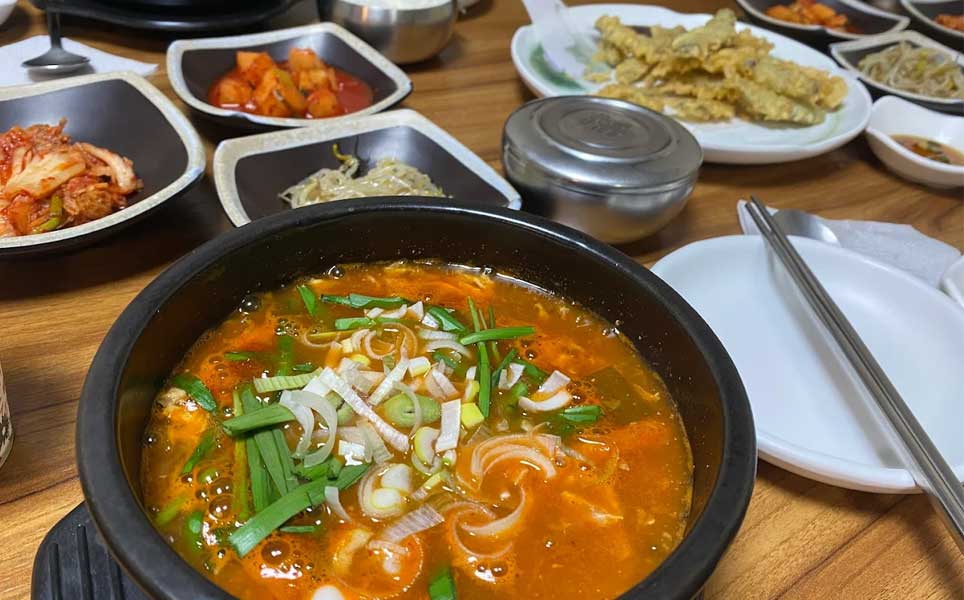
If you’re in Korea during this period (usually mid-July to mid-August), participating in a sambok meal is one of the most intimate cultural experiences you can have. Think of it as your seasonal rite of passage into Korean wellness culture.
Beyond the Broth: What to Expect as a Traveler
You don’t need to speak fluent Korean to appreciate what happens when that bowl of steaming galbitang is placed in front of you. But you do need to know this:
- You’ll sweat. That’s the point. Let it happen. It’s your body recalibrating.
- You will receive offers of ginseng liquor. Sip it. It amplifies the meal’s effect.
- You’ll also eat in hanoks, alley joints, or modest diners. No Instagrammable plating needed—this is soul food, not spectacle.
- You might be the only tourist there. That’s your sign you’re in the right place.
These are meals not meant to cool you down immediately, but to stabilize your core so you feel better hours later—when the sun is still high and the air is thick.
Healthy Korean Foods: Eat With the Seasons, Not Against Them
Healthy Korean summer meals aren’t about escape. They’re about endurance. They reflect a deeper truth in Korean culture: that discomfort is not something to be avoided, but something to be understood, managed, and even embraced—through food.
As a traveler, tuning into that rhythm changes everything. You stop chasing iced trends and start discovering warm, medicinal meals that locals trust with their wellbeing.
And maybe, just maybe, you’ll start sweating with intention—one healing sip at a time.
Related Posts
1,143 total views, 5 views today


